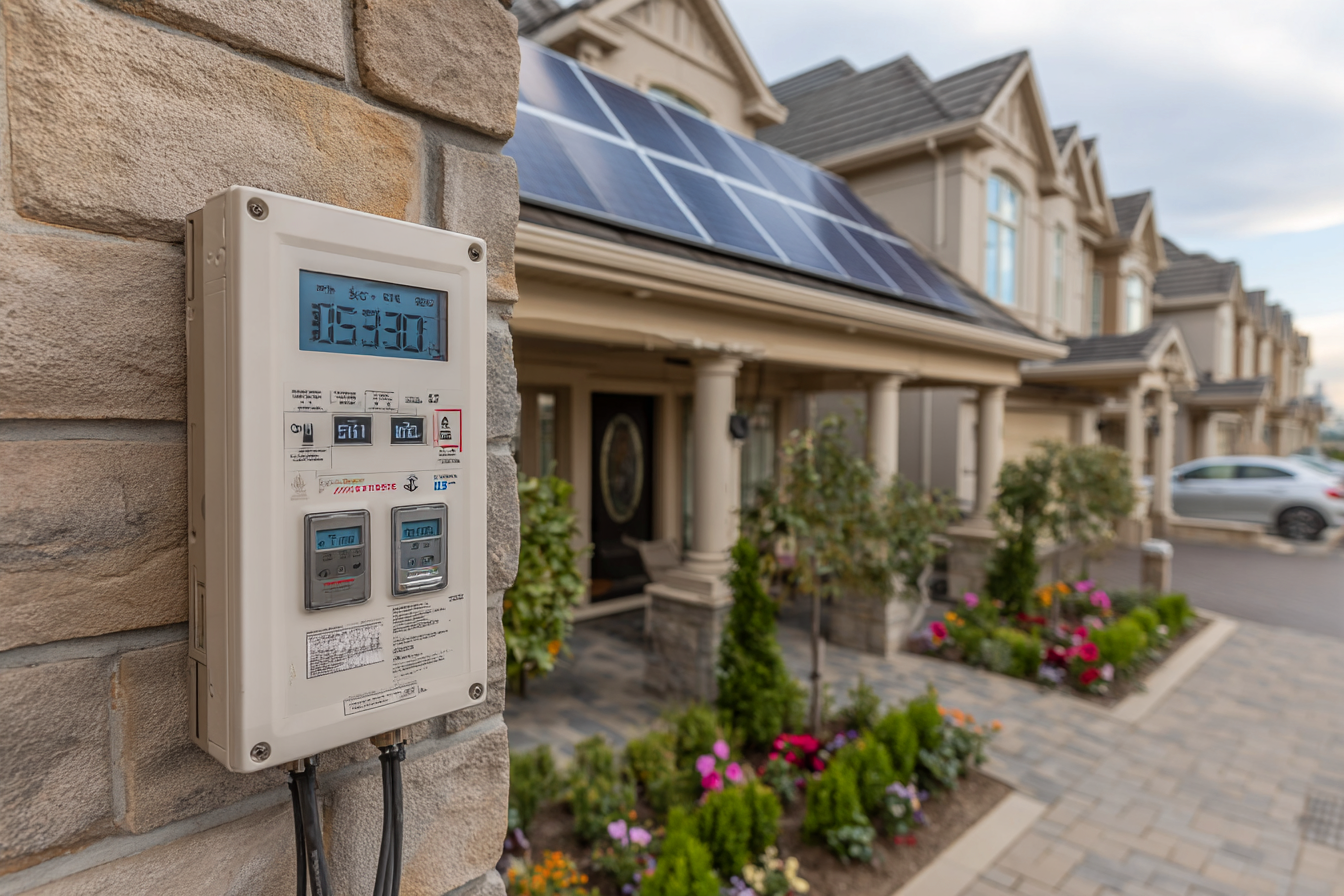Net Metering in Canada: How Bi-Directional Meters Help You Save on Your Hydro Bill

Written by Solenery
2 min read
Introduction
So you’ve installed solar panels on your roof—or you’re thinking about it.
But how exactly do you get credit for the extra electricity your system produces during the day?
That’s where net metering and bi-directional meters come in.
In Canada, net metering is one of the most important tools homeowners have for saving money on their electricity bills with solar.
Yet, it’s also one of the most misunderstood.
This guide breaks down how net metering works, what a bi-directional meter does, and how the rules vary across provinces.
If you’re new to solar, don’t worry—we’ll keep it jargon-free and packed with Canadian context.
What Is Net Metering?
Net metering is a billing system that allows homeowners with solar panels to:
- Send unused solar electricity back to the grid
- Receive credit for that excess power
- Use those credits later, like at night or in winter, when solar production is lower
How it works:
During sunny hours, your solar system might generate more power than you use.
That electricity flows into the grid.
Your utility tracks how much you “export” and gives you a credit.
When you draw power (e.g., at night), those credits offset your usage.Why it’s important:
Without net metering, excess solar power would be “lost” to the grid—and you wouldn’t be paid for it.
Net metering makes your investment more valuable and allows you to offset your entire yearly usage, not just daytime loads.
What’s a Bi-Directional Meter?
To use net metering, your home needs a bi-directional (or smart) meter.
This meter can:
- Track power in both directions (grid to home, home to grid)
- Display “import” and “export” numbers for your billing
- Log hourly or daily energy flows, depending on your utility
In simple terms:
A traditional meter only tracks how much electricity you consume.
A bi-directional meter adds the ability to measure how much you’re producing and feeding back.Canadian example:
Hydro One in Ontario or BC Hydro in British Columbia automatically upgrades your meter to a bi-directional model once your solar system is approved.
How Net Metering Works in Different Provinces
Net metering is available across most of Canada—but the details vary by province.
Here’s a quick breakdown:
Province Net Metering Policy Credit Expiry Notes Ontario 1:1 credit for exports 12 months Monthly netting, credits carry for 1 year Alberta Net billing (credits based on market rate) Monthly cash payout or credit Can vary by provider BC 1:1 credit, annual true-up 12 months BC Hydro sets credit at retail rate Quebec Credits valid for 2 years 24 months Hydro-Québec allows rollover for 2 years Nova Scotia / PEI Similar 1:1 structures Varies Strong support for small systems Manitoba / Saskatchewan 1:1 credit for exports 12 months Some utilities phasing out programs Important:
Always check with your specific utility for the most up-to-date rules.
Some municipalities and co-ops have unique policies.
How Net Metering Helps You Save
Let’s say you install a 5 kW solar system in Ontario:
It generates ~6,000 kWh/year.
Your home uses 8,000 kWh/year.
Net metering allows you to offset 75% of your total annual bill, even if your solar can’t fully power your home 24/7.Savings tip:
If your hydro rate is 18¢/kWh, offsetting 6,000 kWh = $1,080 saved annually.
No batteries required — the grid acts as your “virtual battery.”Pro tip:
Some households add a smart energy monitor (like Emporia or Sense) to better understand when to shift usage and maximize solar savings.
Limitations and What to Watch For
While net metering is a great deal for most homeowners, there are a few things to keep in mind:
- Credit Expiry: If you don’t use all your credits within the rollover period, they may expire.
- System Size Caps: Many provinces cap residential net metering systems at 10 kW.
- Connection Fees: Some utilities charge a one-time interconnection fee for system inspection and approval.
Ontario example:
Systems under 10 kW typically qualify for simple connection with no ongoing fees, as long as your application is approved.
Conclusion
Net metering is one of the most powerful tools for Canadian homeowners to get the most out of solar.
With a bi-directional meter and a properly sized system, you can shrink your hydro bill dramatically and even earn credits for your clean energy.